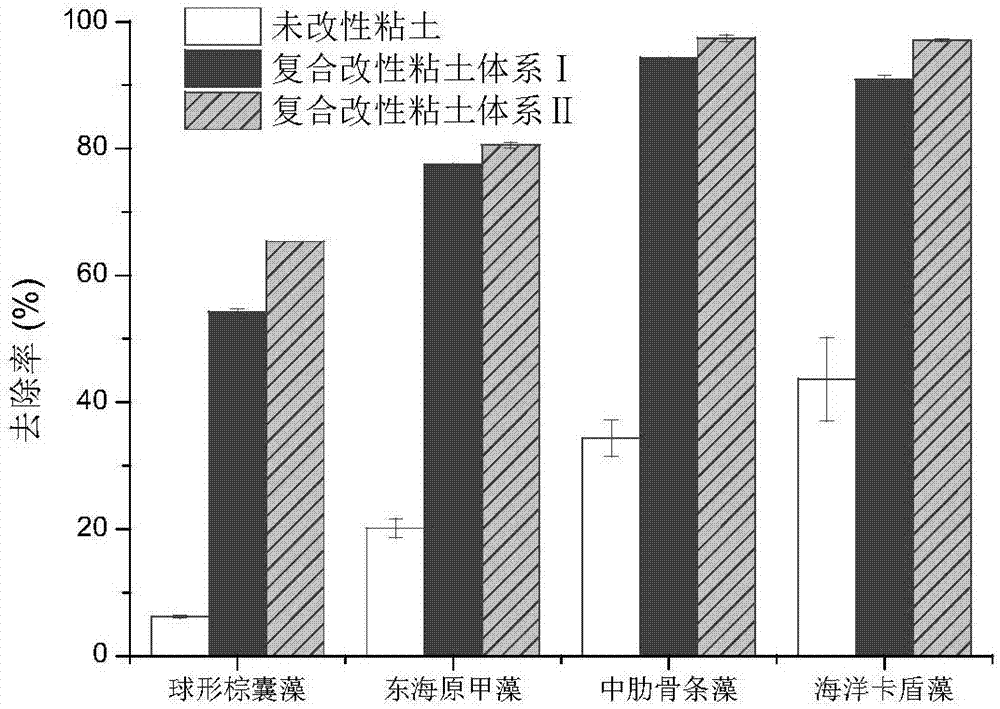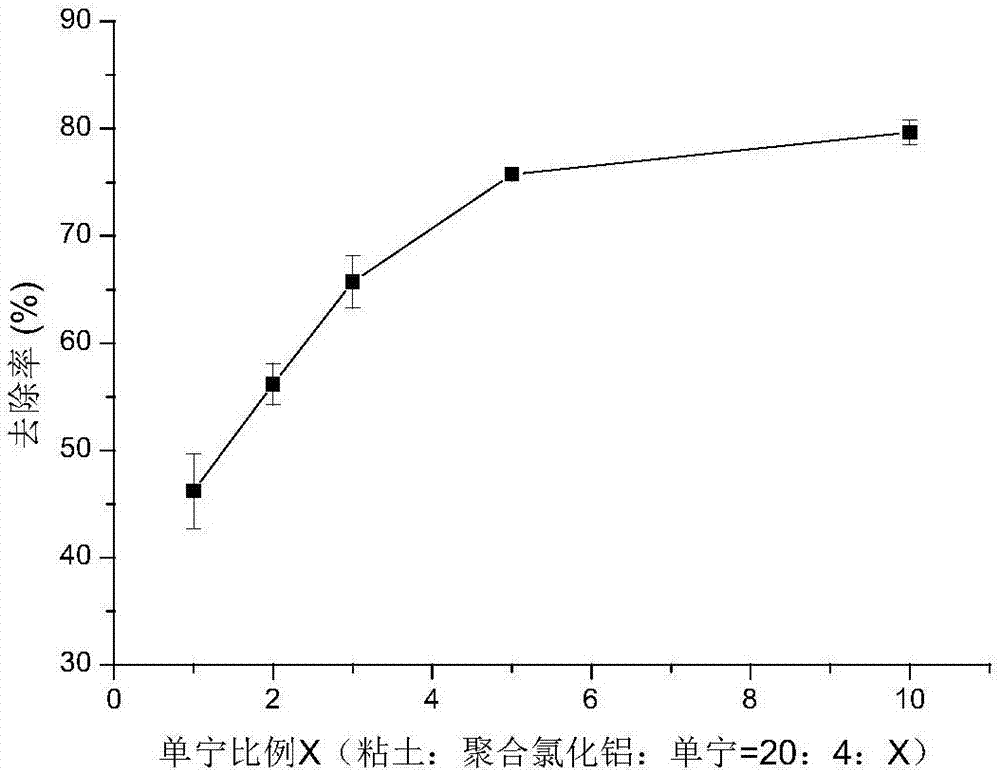Modified clay system for controlling harmful algae blooms in culture water body
A technology for cultivating water bodies and clay, applied in water/sewage treatment, water treatment parameter control, water/sludge/sewage treatment, etc., can solve problems such as low flocculation efficiency, excessive sludge volume, and reduced water transparency. Improve the effectiveness of the removal effect
- Summary
- Abstract
- Description
- Claims
- Application Information
AI Technical Summary
Problems solved by technology
Method used
Image
Examples
Embodiment 1
[0022] Prepare samples for processing:
[0023] The composite modified clay system I for the control of harmful algal blooms in aquaculture water is prepared by mixing and grinding kaolin, polyaluminum chloride and tannic acid, wherein kaolin: polyaluminum chloride: tannin = 5:1:1;
[0024] The composite modified clay system II for the control of harmful algal blooms in aquaculture water is prepared by mixing and grinding kaolin, aluminum sulfate and tannic acid, wherein kaolin: aluminum sulfate: tannin = 5:1:1;
[0025] The compound modified clay system obtained above for the control of harmful algal blooms in aquaculture water is mixed with seawater to form a uniform suspension, and the corresponding concentration is prepared for different algal bloom organisms to be removed and sprayed on the surface of the algal bloom water body. After 3 hours of natural settlement, Can effectively remove algal blooms (see figure 1 ).
[0026] Utilize above-mentioned obtained sample to m...
Embodiment 2
[0028] The composite modified clay system Ⅰ for the control of harmful algal blooms in aquaculture water is prepared from clay, polyaluminum chloride and tannin; their respective mass ratios are clay: polyaluminum chloride: tannin = 20:4:X , X=1, 2, 3, 5, 10.
[0029] Utilize the above-mentioned obtained modified clay to measure its removal effect to Prorocentrum donghaiense: in the liquid of Prorocentrum donghaiense (cell density 2.3×10 5 cells / mL) were added respectively to obtain the above-mentioned modified clay, so that the concentration of clay in the algae liquid was 0.2g / L, after shaking up and standing still for 3 hours, measure its efficiency of removing algal bloom organisms (such as figure 2 shown), the results show that the amount of tannin has a great influence on the algae removal effect of the composite modified clay system, and the removal efficiency gradually increases with the increase of the amount of tannin.
PUM
| Property | Measurement | Unit |
|---|---|---|
| Cell density | aaaaa | aaaaa |
| Cell density | aaaaa | aaaaa |
| Cell density | aaaaa | aaaaa |
Abstract
Description
Claims
Application Information
 Login to View More
Login to View More - R&D
- Intellectual Property
- Life Sciences
- Materials
- Tech Scout
- Unparalleled Data Quality
- Higher Quality Content
- 60% Fewer Hallucinations
Browse by: Latest US Patents, China's latest patents, Technical Efficacy Thesaurus, Application Domain, Technology Topic, Popular Technical Reports.
© 2025 PatSnap. All rights reserved.Legal|Privacy policy|Modern Slavery Act Transparency Statement|Sitemap|About US| Contact US: help@patsnap.com


